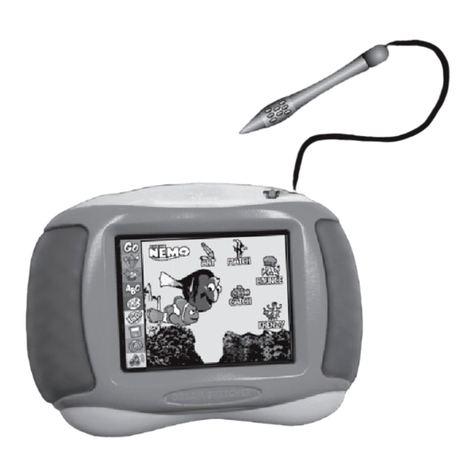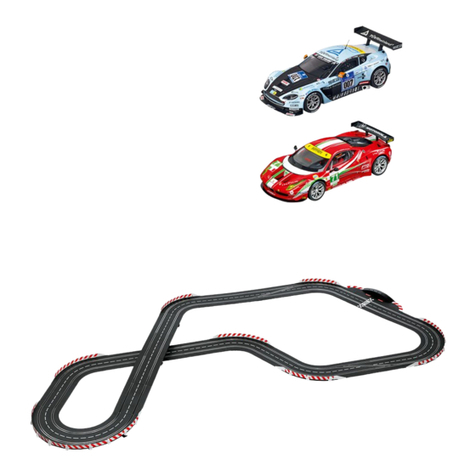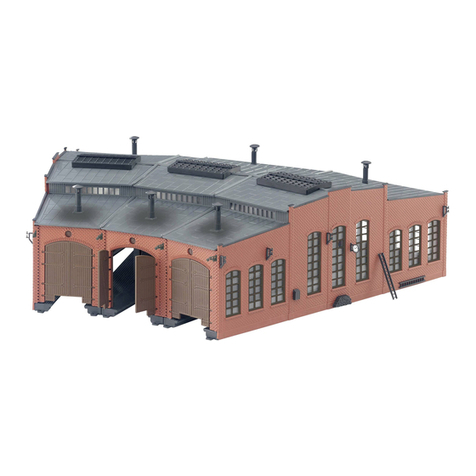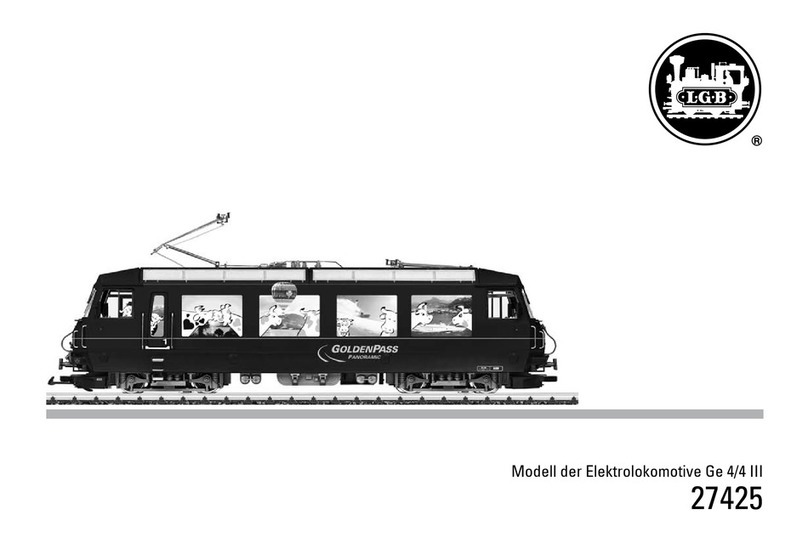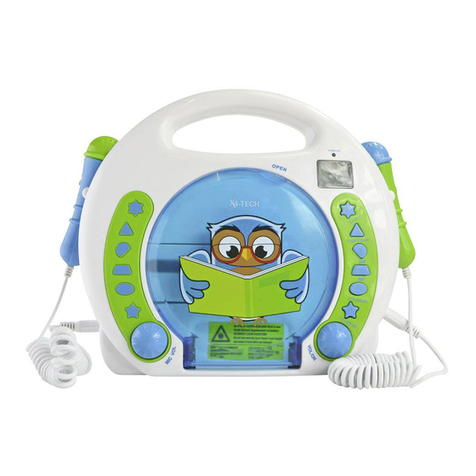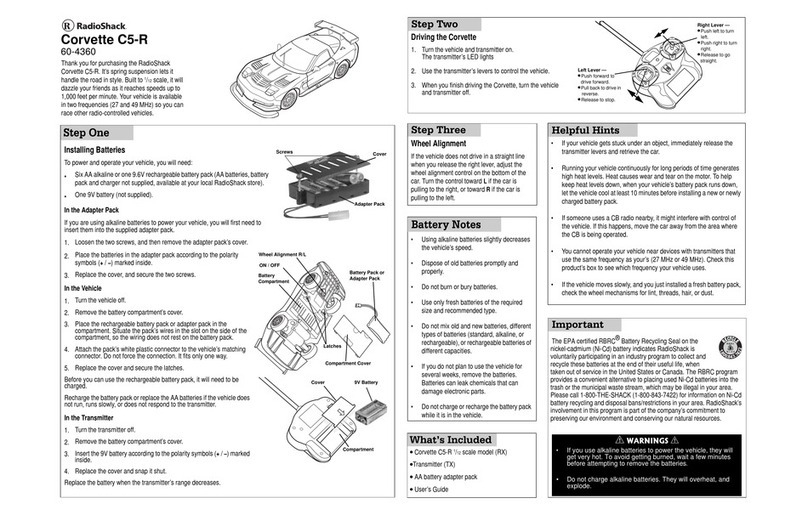Adafruit Industries Circuit Playground Simple Simon User manual

Circuit Playground Simple Simon
Created by Carter Nelson
Last updated on 2018-08-22 03:58:37 PM UTC

2
3
3
3
3
3
3
4
4
5
5
5
5
6
6
6
7
7
7
8
8
9
10
11
11
12
13
14
Guide Contents
Guide Contents
Overview
Special Thanks
Required Parts
Before Starting
Circuit Playground Classic
Circuit Playground Express
Playing the Game
Starting a New Game
Winning
Losing
Playing Again
Example Game Play
Code Walk Through
chooseSkillLevel()
newGame()
indicateButton()
showSequence()
getButtonPress()
gameLost()
gameWon()
setup()
loop()
The Structure of struct
2D Point Example
The Simple Simon "button"
So Why Didn't You Just Create a simonButton Class?
CircuitPython Version
© Adafruit Industries https://learn.adafruit.com/circuit-playground-simple-simon Page 2 of 17

Overview
This is a Circuit Playground rendition of the classic Simon game (https://adafru.it/sTa) from the late 70s and early 80s.
The idea is to repeat an ever growing sequence of lights (each with a tone). Here we use the NeoPixels to represent
the colors, the capacitive touch pads provide our buttons, and the speaker to play the distinctive tones. The Circuit
Playground is even round like the classic game!
Special Thanks
The technical information provided on this page (https://adafru.it/tPa) was very useful for creating the game. Thanks
waitingforfriday (https://adafru.it/tPb) for the reverse engineering!
Another version of this game is available in this guide (https://adafru.it/vnc) by Mike Barela.
Also, forum user bbunderson posted another version of Simon you can play on Circuit Playground. Check it out
here (https://adafru.it/sTc).
Required Parts
This project uses the hardware already included on the Circuit Playground so no additional electronics or soldering are
required. If you want to play the game without being attached to your computer, you will also need some batteries and
a holder for the batteries.
Circuit Playground
Classic (http://adafru.it/3000)
Express (http://adafru.it/3333)
3 x AAA Battery Holder (http://adafru.it/727)
3 x AAA Batteries (NiMH work great!)
Before Starting
If you are new to the Circuit Playground, you may want to first read these overview guides.
Circuit Playground Classic
Overview (https://adafru.it/ncG)
Lesson #0 (https://adafru.it/rb4)
Circuit Playground Express
Overview (https://adafru.it/AgP)
© Adafruit Industries https://learn.adafruit.com/circuit-playground-simple-simon Page 3 of 17

Playing the Game
Here's the code for the Simple Simon game. Download the zip file, extract it, and load the sketch to your Circuit
Playground using the Arduino IDE.
https://adafru.it/tPc
https://adafru.it/tPc
Starting a New Game
You can press the RESET button at anytime to start a new game. When the game starts, you must first select a game
difficulty level using the SKILL LEVEL button. Then press the GAME START button to start playing.
SKILL LEVEL: Use to select game difficulty
GAME START: Use to start a game at selected
skill level
The SKILL LEVEL sets the total length (N) of the game
sequence.
1 -> N=8
2 -> N=14
3 -> N=20
4 -> N=31
The game is played by repeating the sequence of lights shown using the associated touch pads. There are four
different sections of lights, each with its own color and tone.
© Adafruit Industries https://learn.adafruit.com/circuit-playground-simple-simon Page 4 of 17

Use the touch pads shown for each color. You can press
one or both, it doesn't matter.
The sequence starts with only one light. It then grows by one light each time you successfully complete the sequence.
Thus the game starts easy, and gets more difficult as it progresses. To make it even more difficult, the sequence
playback speeds up when the sequence becomes longer.
Winning
To game is won by completing the entire sequence for the chosen skill level without making any mistakes. A super
special sound and light show called a 'razz' is displayed for the victor.
Losing
There are two was to lose the game:
1. Pick an incorrect light in the sequence.
2. Take too long (>3 secs) to pick the next light.
If either of the above happens, the game ends. The light that was suppose to be next is shown.
Playing Again
Simply press RESET to start a new game.
Example Game Play
The video below demonstrates selecting a skill level, starting a new game, general game play, and successfully
completing the sequence.
© Adafruit Industries https://learn.adafruit.com/circuit-playground-simple-simon Page 5 of 17

Code Walk Through
Let's go through the code chunk by chunk to see how it works.
chooseSkillLevel()
The outer while() loop looks for the right button press, which starts the new game. Inside the loop is an if statement
that looks for the left button press and increments the skill level for each press. The value is checked and reset back to
1 if it exceeds the max level, which is 4. The current level is shown using the first 4 NeoPixels.
newGame()
void chooseSkillLevel() {
while (!CircuitPlayground.rightButton()) {
if (CircuitPlayground.leftButton()) {
skillLevel = skillLevel + 1;
if (skillLevel > 4) skillLevel = 1;
CircuitPlayground.clearPixels();
for (int p=0; p<skillLevel; p++) {
CircuitPlayground.setPixelColor(p, 0xFFFFFF);
}
delay(DEBOUNCE);
}
}
}
void newGame() {
// Set game sequence length based on skill level
switch (skillLevel) {
case 1:
sequenceLength = 8;
break;
case 2:
sequenceLength = 14;
break;
case 3:
sequenceLength = 20;
break;
case 4:
sequenceLength = 31;
break;
}
// Populate the game sequence
for (int i=0; i<sequenceLength; i++) {
simonSequence[i] = random(4);
}
// We start with the first step in the sequence
currentStep = 1;
}
© Adafruit Industries https://learn.adafruit.com/circuit-playground-simple-simon Page 6 of 17

The entire game sequence is created before the game is started. The game sequence length is set based on the skill
level in the switch block. The game sequence is then filled with random numbers between 0-3 to represent one of the
four game pads. The currentStep is set to the starting position of 1.
indicateButton()
This function displays the NeoPixels associated with the "button" passed in by b, plays the tone associated with this
"button" for the length of time passed in by duration . After the tone is played, the lights are turned off.
showSequence()
The game sequence is played back up to the current game play location. The duration of the tone is set in the if
statement based on the current location. This sets the play back speed of the sequence. Then, the sequence is played
back up to its current location.
getButtonPress()
void indicateButton(uint8_t b, uint16_t duration) {
CircuitPlayground.clearPixels();
for (int p=0; p<3; p++) {
CircuitPlayground.setPixelColor(simonButton[b].pixel[p], simonButton[b].color);
}
CircuitPlayground.playTone(simonButton[b].freq, duration);
CircuitPlayground.clearPixels();
}
void showSequence() {
// Set tone playback duration based on current sequence length
uint16_t toneDuration;
if (currentStep<=5) {
toneDuration = 420;
} else if (currentStep<=13) {
toneDuration = 320;
} else {
toneDuration = 220;
}
// Play back sequence up to current step
for (int i=0; i<currentStep; i++) {
delay(50);
indicateButton(simonSequence[i], toneDuration);
}
}
© Adafruit Industries https://learn.adafruit.com/circuit-playground-simple-simon Page 7 of 17

The 2 touch pads associated with each "button" are scanned to see if either are currently being touched. If so, it is
indicated and its index is returned, otherwise NO_BUTTON is returned.
gameLost()
The "button" that is passed in via b is shown, the sad tone is played, and the game ends at an infinite loop.
gameWon()
uint8_t getButtonPress() {
for (int b=0; b<4; b++) {
for (int p=0; p<2; p++) {
if (CircuitPlayground.readCap(simonButton[b].capPad[p]) > CAP_THRESHOLD) {
indicateButton(b, DEBOUNCE);
return b;
}
}
}
return NO_BUTTON;
}
void gameLost(int b) {
// Show button that should have been pressed
for (int p=0; p<3; p++) {
CircuitPlayground.setPixelColor(simonButton[b].pixel[p], simonButton[b].color);
}
// Play sad sound :(
CircuitPlayground.playTone(FAILURE_TONE, 1500);
// And just sit here until reset
while (true) {}
}
© Adafruit Industries https://learn.adafruit.com/circuit-playground-simple-simon Page 8 of 17

Plays the super special victory 'razz' and ends with an infinite loop of blinking lights.
setup()
void gameWon() {
// Play 'razz' special victory signal
for (int i=0; i<3; i++) {
indicateButton(3, 100); // RED
indicateButton(1, 100); // YELLOW
indicateButton(2, 100); // BLUE
indicateButton(0, 100); // GREEN
}
indicateButton(3, 100); // RED
indicateButton(1, 100); // YELLOW
// Change tones to failure tone
for (int b=0; b<4; b++) simonButton[b].freq = FAILURE_TONE;
// Continue for another 0.8 seconds
for (int i=0; i<2; i++) {
indicateButton(2, 100); // BLUE
indicateButton(0, 100); // GREEN
indicateButton(3, 100); // RED
indicateButton(1, 100); // YELLOW
}
// Change tones to silence
for (int b=0; b<4; b++) simonButton[b].freq = 0;
// Loop lights forever
while (true) {
indicateButton(2, 100); // BLUE
indicateButton(0, 100); // GREEN
indicateButton(3, 100); // RED
indicateButton(1, 100); // YELLOW
}
}
void setup() {
// Initialize the Circuit Playground
CircuitPlayground.begin();
// Set play level
skillLevel = 1;
CircuitPlayground.clearPixels();
CircuitPlayground.setPixelColor(0, 0xFFFFFF);
chooseSkillLevel();
// Sowing the seeds of random
randomSeed(millis());
// Create game
newGame();
}
© Adafruit Industries https://learn.adafruit.com/circuit-playground-simple-simon Page 9 of 17

Per the rules of Arduino, this is the first thing called. It initializes the Circuit Playground, gets the skill level, seeds the
pseudo random number generator, and sets up a new game.
loop()
Per the rules of Arduino, this is called over and over and over and over. First, the current sequence is played back.
Then the player interaction is dealt with. For each step in the sequence, a button is read. If it's the wrong button, or the
player took too long to press the button, the value is set to NO_BUTTON . The button value is then compared to the
current sequence value. If it's correct, the game continues. If it's wrong, the game is over. Once the step values
exceeds the game sequence length, the game is won.
void loop() {
// Show sequence up to current step
showSequence();
// Read player button presses
for (int s=0; s<currentStep; s++) {
startGuessTime = millis();
guess = NO_BUTTON;
while ((millis() - startGuessTime < GUESS_TIMEOUT) && (guess==NO_BUTTON)) {
guess = getButtonPress();
}
if (guess != simonSequence[s]) {
gameLost(simonSequence[s]);
}
}
currentStep++;
if (currentStep > sequenceLength) {
delay(SEQUENCE_DELAY);
gameWon();
}
delay(SEQUENCE_DELAY);
}
© Adafruit Industries https://learn.adafruit.com/circuit-playground-simple-simon Page 10 of 17

The Structure of struct
In the previous section, I didn't mention any of the lines of code at the top of the sketch. Most of these are just normal
global variables and constants that are fairly common. However, this section of code may be new to you.
This is defining, and initializing, an array ( simonButton[] ) of something called a struct. A struct comes from the C
programming language, but is also supported in C++ and thus Arduino. What it basically does is let us create a new
variable that is a collection of information associated with something, like a Simon "button". This let's us pass around
and access this information from a single reference. We don't need to pass around each individual piece of information
separately.
Talking about structs can get pretty complex, and they're a precursor to the more complex class of C++ and the world
of OOP. But they are very useful, and we are using it in a fairly simple way in our Simple Simon code. To better
understand why a struct is useful, let's look at a more simple example - a 2D point.
2D Point Example
A 2D point is represented by an x and y value. We could create these as separate variables:
and then use them as normal:
But what if I wanted to pass this 2D point to a function? Or what if I wanted to create another 2D point? Things start
getting a little messy. This is where a struct would help out. Instead of two separate variable, we create a single struct
to represent the 2D point, and put the variables in there.
Have fun playing the game for a while before reading this section.
struct button {
uint8_t capPad[2];
uint8_t pixel[3];
uint32_t color;
uint16_t freq;
} simonButton[] = {
{ {3,2}, {0,1,2}, 0x00FF00, 415 }, // GREEN
{ {0,1}, {2,3,4}, 0xFFFF00, 252 }, // YELLOW
{ {12, 6}, {5,6,7}, 0x0000FF, 209 }, // BLUE
{ {9, 10}, {7,8,9}, 0xFF0000, 310 }, // RED
};
float x;
float y;
x = 45.3;
y = -108.6;
struct point {
float x;
float y;
}
© Adafruit Industries https://learn.adafruit.com/circuit-playground-simple-simon Page 11 of 17

And then to create a new point variable:
And assign it values:
Now all one needs to do is pass the variable someLocation around. The values come along for the ride. And they don't
get confused with some other values. If we need another 2D point, we just create another variable, or better yet, an
array of them.
The one fancy thing being done in the Simple Simon code is to create and initialize the values of the struct in one step.
For our 2D point example, this would look like:
It's just a shortcut way of creating the variable and assigning it some initial values.
The Simple Simon "button"
Getting back to our Simple Simon game, think about what each of the four "buttons" has. Most obvious is a color. But
they also make a sound when they are pressed, and each has its own tone. Since we are trying to implement these on
our Circuit Playground, we will use a set of NeoPixels to show off the color. Also, we plan to use capacitive touch for
the buttons, with each button having a couple of pads. So, we have the following items for each "button":
2 x capacitive touch pads
3 x NeoPixels
a color
a tone
Hey, that should look familiar. Look again at the struct definition:
Just like the list. For each "button" we have the indices for 2 capacitive touch pads, the indices for 3 NeoPixels, the
color to use for the NeoPixels, and the frequency of the tone for the button.
We have more than one "button", so we create an array of them and initialize their values:
struct point someLocation;
someLocation.x = 45.3;
someLocation.y = -108.6;
struct point {
float x;
float y;
} someLocation = {
45.3, -108.6
}
struct button {
uint8_t capPad[2];
uint8_t pixel[3];
uint32_t color;
uint16_t freq;
}
© Adafruit Industries https://learn.adafruit.com/circuit-playground-simple-simon Page 12 of 17

Each line is an entry in the array and represents one button. Each item in each line corresponds to the value of the
struct and is used to define the specific buttons. For example, the first line defines the GREEN button as having the
capacitive touch pads #3 and #2, the NeoPixels #0, #1, and #2, the color green (in hex), and the frequency 415Hz.
Then, if we need the frequency for the tone of the GREEN button, the syntax is:
The color for the BLUE button?
The index of the 2nd NeoPixel for the RED button?
etc. etc.
Hopefully that makes some sense and you see how it is useful. If not, meh, just have fun playing the game....for now.
So Why Didn't You Just Create a simonButton Class?
Just trying to keep it simple. But this is totally doable, since Arduino uses C++ under the hood.
simonButton[] = {
{ {3,2}, {0,1,2}, 0x00FF00, 415 }, // GREEN
{ {0,1}, {2,3,4}, 0xFFFF00, 252 }, // YELLOW
{ {12, 6}, {5,6,7}, 0x0000FF, 209 }, // BLUE
{ {9, 10}, {7,8,9}, 0xFF0000, 310 }, // RED
};
simonButton[0].freq
simonButton[2].color
simonButton[3].pixel[1]
© Adafruit Industries https://learn.adafruit.com/circuit-playground-simple-simon Page 13 of 17

CircuitPython Version
Here is a CircuitPython (https://adafru.it/A22) version of the Simple Simon code.
CircuitPython only works on the Circuit Playground Express.
# Circuit Playground Express Simple Simon
#
# Game play based on information provided here:
# http://www.waitingforfriday.com/?p=586
#
# Author: Carter Nelson
# MIT License (https://opensource.org/licenses/MIT)
import time
import random
import math
import board
from analogio import AnalogIn
from adafruit_circuitplayground.express import cpx
FAILURE_TONE = 100
SEQUENCE_DELAY = 0.8
GUESS_TIMEOUT = 3.0
DEBOUNCE = 0.250
SEQUENCE_LENGTH = {
1 : 8,
2 : 14,
3 : 20,
4 : 31
}
SIMON_BUTTONS = {
1 : { 'pads':(4,5), 'pixels':(0,1,2), 'color':0x00FF00, 'freq':415 },
2 : { 'pads':(6,7), 'pixels':(2,3,4), 'color':0xFFFF00, 'freq':252 },
3 : { 'pads':(1, ), 'pixels':(5,6,7), 'color':0x0000FF, 'freq':209 },
4 : { 'pads':(2,3), 'pixels':(7,8,9), 'color':0xFF0000, 'freq':310 },
}
def choose_skill_level():
# Default
skill_level = 1
# Loop until button B is pressed
while not cpx.button_b:
# Button A increases skill level setting
if cpx.button_a:
skill_level += 1
skill_level = skill_level if skill_level < 5 else 1
# Indicate current skill level
cpx.pixels.fill(0)
for p in range(skill_level):
cpx.pixels[p] = 0xFFFFFF
time.sleep(DEBOUNCE)
return skill_level
def new_game(skill_level):
# Seed the random function with noise
a4 = AnalogIn(board.A4)
a5 = AnalogIn(board.A5)
© Adafruit Industries https://learn.adafruit.com/circuit-playground-simple-simon Page 14 of 17

a5 = AnalogIn(board.A5)
a6 = AnalogIn(board.A6)
a7 = AnalogIn(board.A7)
seed = a4.value
seed += a5.value
seed += a6.value
seed += a7.value
random.seed(seed)
# Populate the game sequence
return [random.randint(1,4) for i in range(SEQUENCE_LENGTH[skill_level])]
def indicate_button(button, duration):
# Turn them all off
cpx.pixels.fill(0)
# Turn on the ones for the given button
for p in button['pixels']:
cpx.pixels[p] = button['color']
# Play button tone
if button['freq'] == None:
time.sleep(duration)
else:
cpx.play_tone(button['freq'], duration)
# Turn them all off again
cpx.pixels.fill(0)
def show_sequence(sequence, step):
# Set tone playback duration based on current location
if step <= 5:
duration = 0.420
elif step <= 13:
duration = 0.320
else:
duration = 0.220
# Play back sequence up to current step
for b in range(step):
time.sleep(0.05)
indicate_button(SIMON_BUTTONS[sequence[b]], duration)
def cap_map(b):
if b == 1: return cpx.touch_A1
if b == 2: return cpx.touch_A2
if b == 3: return cpx.touch_A3
if b == 4: return cpx.touch_A4
if b == 5: return cpx.touch_A5
if b == 6: return cpx.touch_A6
if b == 7: return cpx.touch_A7
def get_button_press():
# Loop over all the buttons
for button in SIMON_BUTTONS.values():
# Loop over each pad
for pad in button['pads']:
if cap_map(pad):
indicate_button(button, DEBOUNCE)
return button
return None
© Adafruit Industries https://learn.adafruit.com/circuit-playground-simple-simon Page 15 of 17

def game_lost(step):
# Show button that should have been pressed
cpx.pixels.fill(0)
for p in SIMON_BUTTONS[sequence[step]]['pixels']:
cpx.pixels[p] = SIMON_BUTTONS[sequence[step]]['color']
# Play sad sound :(
cpx.play_tone(FAILURE_TONE, 1.5)
# And just sit here until reset
while True:
pass
def game_won():
# Play 'razz' special victory signal
for i in range(3):
indicate_button(SIMON_BUTTONS[4], 0.1)
indicate_button(SIMON_BUTTONS[2], 0.1)
indicate_button(SIMON_BUTTONS[3], 0.1)
indicate_button(SIMON_BUTTONS[1], 0.1)
indicate_button(SIMON_BUTTONS[4], 0.1)
indicate_button(SIMON_BUTTONS[2], 0.1)
# Change tones to failure tone
for button in SIMON_BUTTONS.values():
button['freq'] = FAILURE_TONE
# Continue for another 0.8 seconds
for i in range(2):
indicate_button(SIMON_BUTTONS[3], 0.1)
indicate_button(SIMON_BUTTONS[1], 0.1)
indicate_button(SIMON_BUTTONS[4], 0.1)
indicate_button(SIMON_BUTTONS[2], 0.1)
# Change tones to silence
for button in SIMON_BUTTONS.values():
button['freq'] = None
# Loop lights forever
while True:
indicate_button(SIMON_BUTTONS[3], 0.1)
indicate_button(SIMON_BUTTONS[1], 0.1)
indicate_button(SIMON_BUTTONS[4], 0.1)
indicate_button(SIMON_BUTTONS[2], 0.1)
# Initialize setup
cpx.pixels.fill(0)
cpx.pixels[0] = 0xFFFFFF
skill_level = choose_skill_level()
sequence = new_game(skill_level)
current_step = 1
#Loop forever
while True:
# Show sequence up to current step
show_sequence(sequence, current_step)
# Read player button presses
for step in range(current_step):
© Adafruit Industries https://learn.adafruit.com/circuit-playground-simple-simon Page 16 of 17

for step in range(current_step):
start_guess_time = time.monotonic()
guess = None
while (time.monotonic() - start_guess_time < GUESS_TIMEOUT) and (guess == None):
guess = get_button_press()
if not guess == SIMON_BUTTONS[sequence[step]]:
game_lost(sequence[step])
# Advance the game forward
current_step += 1
if current_step > len(sequence):
game_won()
# Small delay before continuing
time.sleep(SEQUENCE_DELAY)
© Adafruit Industries Last Updated: 2018-08-22 03:58:32 PM UTC Page 17 of 17
Table of contents
Popular Toy manuals by other brands
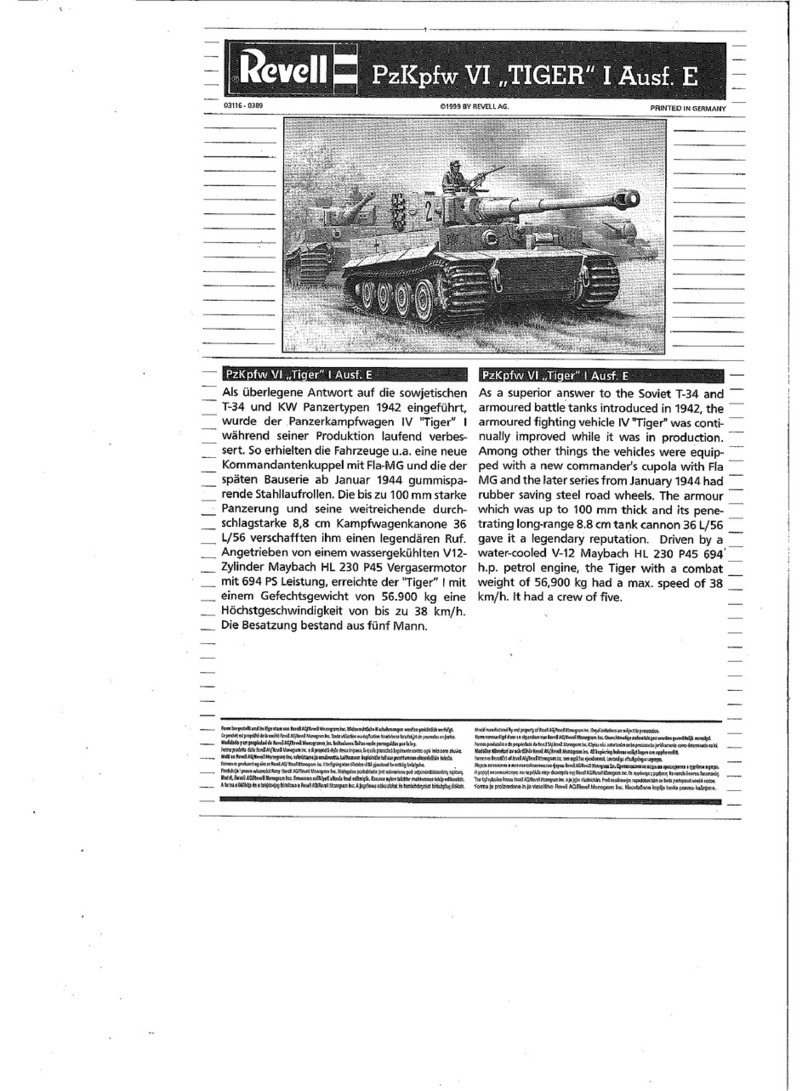
REVELL
REVELL PzKpfw VI Tiger I Ausf E Assembly manual
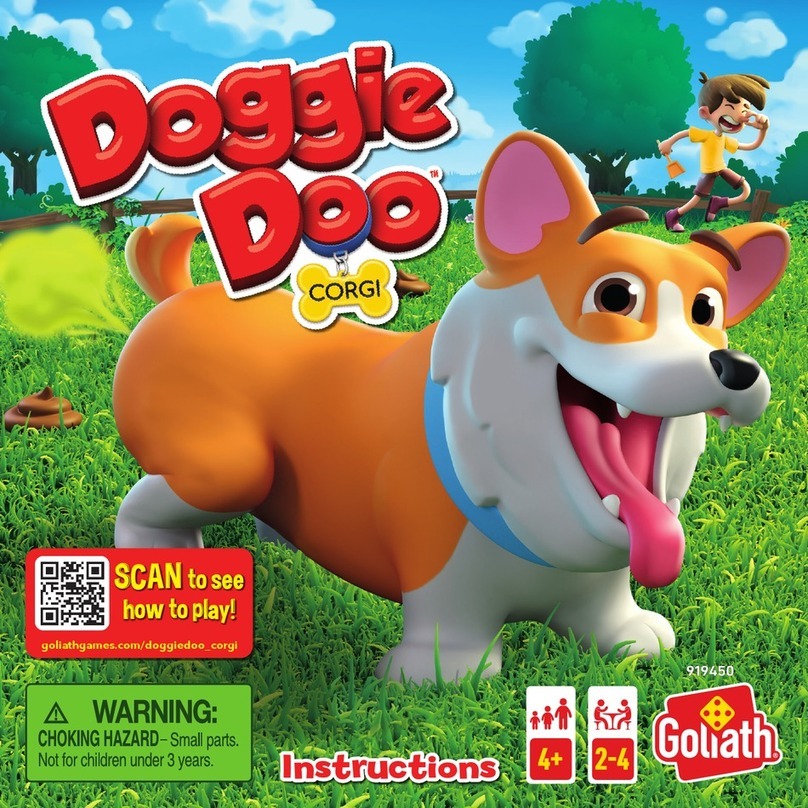
goliath
goliath Doggie Doo CORGI instructions

Fisher-Price
Fisher-Price Thomas & Friends TRACK MASTER THOMAS VOLCANO... instructions

Tamiya
Tamiya Holiday Buggy 5823 instruction manual

Phoenix Model
Phoenix Model DECATHLON MK2 instruction manual

MOOSE
MOOSE Shopkins Sing-Along Boombox manual
